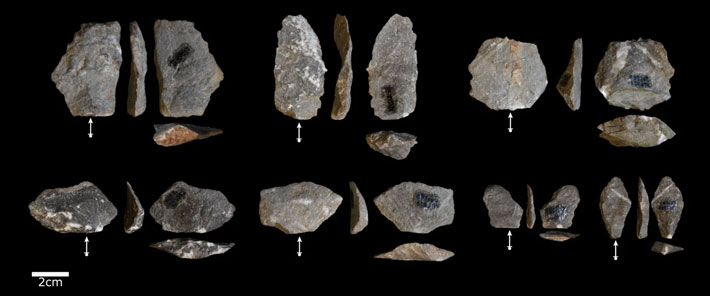 LEIPZIG, GERMANY—According to a Science News report, Tomos Proffitt of the Max Planck Institute for Evolutionary Anthropology and his colleagues suggest that it may be necessary to develop new guidelines for evaluating whether or not stone flakes were produced by ancient hominins on purpose or by accident. Proffitt and his team members identified more than 200 complete and fragmented stone flakes at 40 locations in southern Thailand where long-tailed macaques (Macaca fascicularis) use rocks to crack open oil palm nuts. Sharp-edged flakes sometimes break off the monkeys’ pounding stones inadvertently in the process. These flakes resemble those thought to have been produced on purpose by ancient hominins living in East Africa between 3.3 and 1.56 million years ago, Proffitt explained. The team members did observe some differences between the flakes left behind by macaques and those uncovered in East Africa, however. For example, many of the macaque flakes are damaged only on one side, while many of the hominin flakes are damaged on two sides. Read the original scholarly article about this research in Science Advances. To read about a 4,500-year-old burial of a rhesus macaque at Shahr-i-Sokhta, go to "World Roundup: Iran."
LEIPZIG, GERMANY—According to a Science News report, Tomos Proffitt of the Max Planck Institute for Evolutionary Anthropology and his colleagues suggest that it may be necessary to develop new guidelines for evaluating whether or not stone flakes were produced by ancient hominins on purpose or by accident. Proffitt and his team members identified more than 200 complete and fragmented stone flakes at 40 locations in southern Thailand where long-tailed macaques (Macaca fascicularis) use rocks to crack open oil palm nuts. Sharp-edged flakes sometimes break off the monkeys’ pounding stones inadvertently in the process. These flakes resemble those thought to have been produced on purpose by ancient hominins living in East Africa between 3.3 and 1.56 million years ago, Proffitt explained. The team members did observe some differences between the flakes left behind by macaques and those uncovered in East Africa, however. For example, many of the macaque flakes are damaged only on one side, while many of the hominin flakes are damaged on two sides. Read the original scholarly article about this research in Science Advances. To read about a 4,500-year-old burial of a rhesus macaque at Shahr-i-Sokhta, go to "World Roundup: Iran."
When Did Hominins Begin to Produce Tools?
